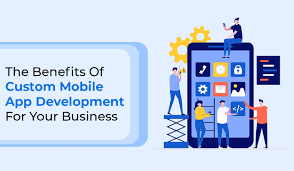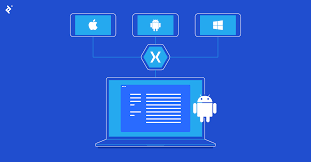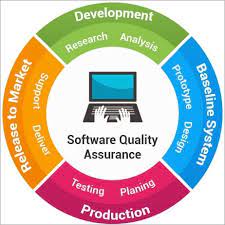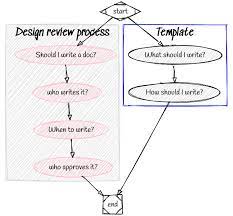Empowering Your Business: Custom Mobile Application Development Company Tailored for Success
The Importance of Choosing a Custom Mobile Application Development Company
In today’s digital age, mobile applications have become essential tools for businesses looking to enhance their online presence and engage with customers on a more personal level. With the increasing demand for mobile apps, the need for custom solutions tailored to specific business requirements has also grown significantly.
When it comes to developing a mobile application that stands out from the competition and meets the unique needs of your business, partnering with a custom mobile application development company is crucial. These companies specialize in creating bespoke mobile apps that are designed to address your specific goals and objectives.
Benefits of Working with a Custom Mobile App Development Company:
- Personalized Solutions: Custom app development companies take the time to understand your business requirements and create tailored solutions that align with your brand identity and objectives.
- Enhanced User Experience: By focusing on user-centric design and functionality, custom mobile apps provide a seamless and intuitive experience for your customers, leading to higher engagement and retention rates.
- Scalability and Flexibility: Custom apps are built to scale as your business grows, allowing for future enhancements and updates to meet evolving market demands.
- Technical Expertise: Custom app development companies have a team of experienced developers who are well-versed in the latest technologies and trends, ensuring that your app is built using best practices and industry standards.
- Support and Maintenance: After launching your custom mobile app, these companies provide ongoing support and maintenance services to ensure optimal performance and functionality.
Whether you are looking to create an e-commerce app, a productivity tool, or a customer relationship management system, partnering with a custom mobile application development company can help you bring your vision to life effectively. By investing in a custom solution, you can differentiate your brand in the competitive app market and deliver value to your target audience.
If you’re ready to take your business to the next level with a customized mobile app, consider working with a reputable custom mobile application development company that can turn your ideas into reality.
Top 6 FAQs About Partnering with a Custom Mobile App Development Company
- 1. What is the process of developing a custom mobile application?
- 2. How long does it take to develop a custom mobile app?
- 3. What factors determine the cost of custom mobile app development?
- 4. Can you provide examples of custom mobile apps you have developed in the past?
- 5. Do you offer post-launch support and maintenance for custom mobile apps?
- 6. How do you ensure that the custom mobile app aligns with our business goals and requirements?
1. What is the process of developing a custom mobile application?
The process of developing a custom mobile application typically involves several key stages. It begins with a thorough discovery phase, where the development team collaborates closely with the client to gather requirements, define objectives, and outline the app’s features and functionality. Following this, the design phase focuses on creating wireframes and prototypes to visualize the app’s user interface and user experience. Development then takes center stage, where coding and programming bring the app to life according to the agreed-upon specifications. Testing is a critical step to ensure the app functions seamlessly across various devices and platforms. Finally, deployment involves launching the app on app stores and providing ongoing support and maintenance post-launch to address any issues or implement updates as needed.
2. How long does it take to develop a custom mobile app?
When considering the development timeline for a custom mobile app, it is essential to understand that the duration can vary significantly based on various factors. The complexity of the app, features and functionalities required, design intricacies, integration with backend systems, testing phases, and client feedback loops all play a role in determining the timeframe. On average, a custom mobile app development process can take anywhere from a few weeks to several months to complete. It is crucial for businesses to work closely with their chosen custom mobile application development company to establish clear project milestones and timelines to ensure a successful and timely delivery of the app.
3. What factors determine the cost of custom mobile app development?
When considering the cost of custom mobile app development, several key factors come into play. These factors include the complexity of the app’s features and functionality, the platform(s) it will be built for (iOS, Android, or both), the design requirements, integration with third-party services, backend infrastructure needs, ongoing maintenance and support, as well as the location and expertise of the development team. Each of these elements contributes to the overall cost estimation for creating a custom mobile application that meets your specific business goals and user needs.
4. Can you provide examples of custom mobile apps you have developed in the past?
When considering a custom mobile application development company, a frequently asked question is, “Can you provide examples of custom mobile apps you have developed in the past?” This question is crucial as it allows potential clients to assess the company’s expertise and experience in creating tailored solutions. By reviewing past projects and case studies, clients can gain insight into the company’s capabilities, design aesthetics, functionality, and overall success in delivering customized mobile applications that meet specific business needs. Providing examples of previous work not only showcases the company’s proficiency but also helps clients envision the possibilities for their own custom mobile app development project.
5. Do you offer post-launch support and maintenance for custom mobile apps?
Ensuring the success and longevity of your custom mobile application is a top priority for us. We understand the importance of post-launch support and maintenance in keeping your app running smoothly and meeting evolving user needs. Our custom mobile application development company is dedicated to providing comprehensive post-launch support services, including regular maintenance, updates, bug fixes, and technical assistance. You can rely on our team to be there every step of the way to ensure that your custom mobile app continues to deliver optimal performance and user satisfaction long after its launch.
6. How do you ensure that the custom mobile app aligns with our business goals and requirements?
When selecting a custom mobile application development company, ensuring that the app aligns with your business goals and requirements is crucial. A reputable company will begin by conducting a thorough analysis of your business objectives, target audience, and market landscape. They will collaborate closely with you to gather detailed requirements and preferences for the app’s features, design, and functionality. Through effective communication, regular feedback sessions, and prototyping, the development team will work diligently to tailor the mobile app to meet your specific needs while aligning it with your overarching business goals. By following a structured development process that prioritizes your input and vision, the custom mobile app will be crafted to reflect your brand identity and deliver tangible value to your users.











